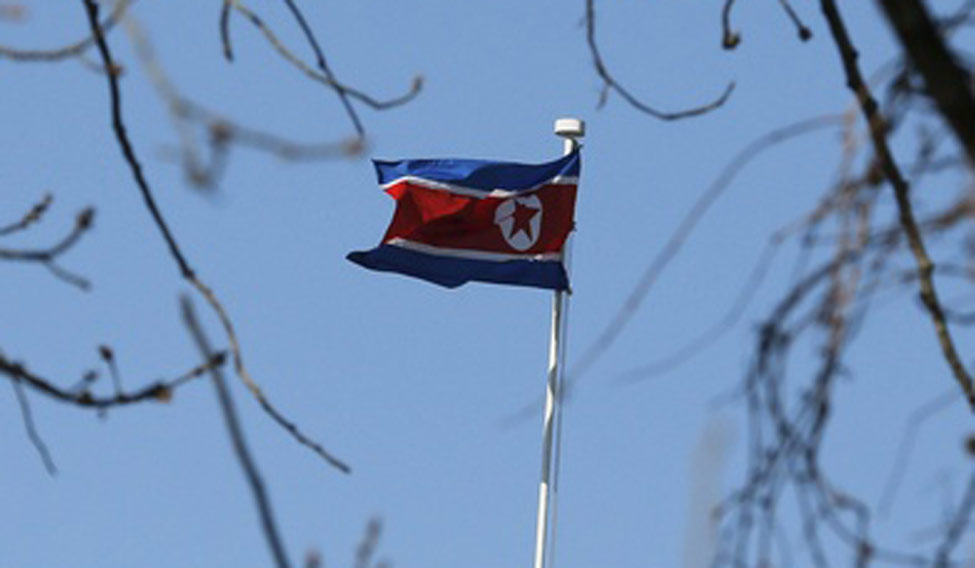US Air Force B-1B Lancer bombers, escorted by fighter jets, flew in international airspace over waters east of North Korea on Saturday, in a show of force the Pentagon said demonstrated the range of military options available to President Donald Trump.
The flight, which was disclosed shortly before North Korea’s foreign minister was due to address the United Nations, was the farthest north of the demilitarised zone separating North and South Korea that any US fighter jet or bomber has flown in the 21st century, the Pentagon said.
“This mission is a demonstration of US resolve and a clear message that the President has many military options to defeat any threat,” said Pentagon spokeswoman Dana White, calling North Korea’s weapons program “a grave threat.”
“We are prepared to use the full range of military capabilities to defend the US homeland and our allies.”
North Korea has launched dozens of missiles this year, several flying over Japan, as it accelerates its programme aimed at enabling it to target the United States with a nuclear-tipped missile.
The flight follows a week of heightened rhetoric from Washington and Pyongyang, with Trump and Kim Jong Un trading insults. Trump called the North Korean leader a “madman” on Friday, a day after Kim dubbed him a “mentally deranged US dotard.”
Pyongyang conducted its sixth and largest nuclear test on September 3 and has launched dozens of missiles this year as it accelerates a program aimed at enabling it to target the United States with a nuclear-tipped missile. The North has threatened to test a hydrogen bomb over the Pacific.
The Pentagon said the B-1B Lancer bombers came from Guam and the US Air Force F-15C Eagle fighter escorts came from Okinawa, Japan. It said the operation showed the seriousness with which it took North Korea’s “reckless behavior.”
The patrols came after officials and experts said a small earthquake near North Korea’s nuclear test site on Saturday was probably not man-made, easing fears Pyongyang had exploded another nuclear bomb just weeks after its last one.
North Korea’s Foreign Minister Ri Yong Ho warned on Thursday that North Korea could consider a hydrogen bomb test of an unprecedented scale over the Pacific.
Ri did not respond on Saturday when asked by reporters whether North Korea had conducted a new nuclear test.
China’s Earthquake Administration said the quake was not a nuclear explosion and had the characteristics of a natural tremor.
The CTBTO, or Comprehensive Test-Ban Treaty Organisation, which monitors nuclear tests, and officials of the South Korean meteorological agency also said they believed it was a natural quake.
A US intelligence official and US-based non-governmental experts said their initial assessment was that the quake was either natural or connected to North Korea’s latest and largest nuclear test on September 3, and not caused by a new nuclear test.
An official of South Korea’s Meteorological Agency said acoustic waves should be detected in the event of a man-made earthquake.
“In this case we saw none. So as of now, we are categorising this as a natural earthquake.”
The earthquake, which South Korea’s Meteorological Agency put at magnitude 3.0, was detected 49km from Kilju in North Hamgyong Province, where North Korea’s known Punggye-ri nuclear site is located, the official said.
All of North Korea’s six nuclear tests registered as earthquakes of magnitude 4.3 or above. The last test registered as a 6.3 magnitude quake.
A secondary tremor detected after that test could have been caused by the collapse of a tunnel at the mountainous site, experts said at the time. Satellite photos after the September 3 quake showed numerous landslides apparently caused by the massive blast, which North Korea said was an advanced hydrogen bomb.
Tensions high
The US Geological Survey said it could not conclusively confirm whether the quake, which it measured at magnitude 3.5, was man-made or natural.
Tensions have continued to rise around the Korean Peninsula since Pyongyang carried out its sixth nuclear test, prompting a new round of UN sanctions.
Trump said the United States would “totally destroy” North Korea if it threatened the United States or its allies.
On Thursday Trump announced new US sanctions that he said allow targeting of companies and institutions that finance and facilitate trade with North Korea.
Earlier on Saturday, China said it will limit exports of refined petroleum products from Oct. 1 and ban exports of condensates and liquefied natural gas immediately to comply with the latest UN sanctions. It will also ban imports of textiles from North Korea.
North Korea’s nuclear tests to date have all been underground, and experts say an atmospheric test, which would be the first since one by China in 1980, would be proof of the success of its weapons programme.





